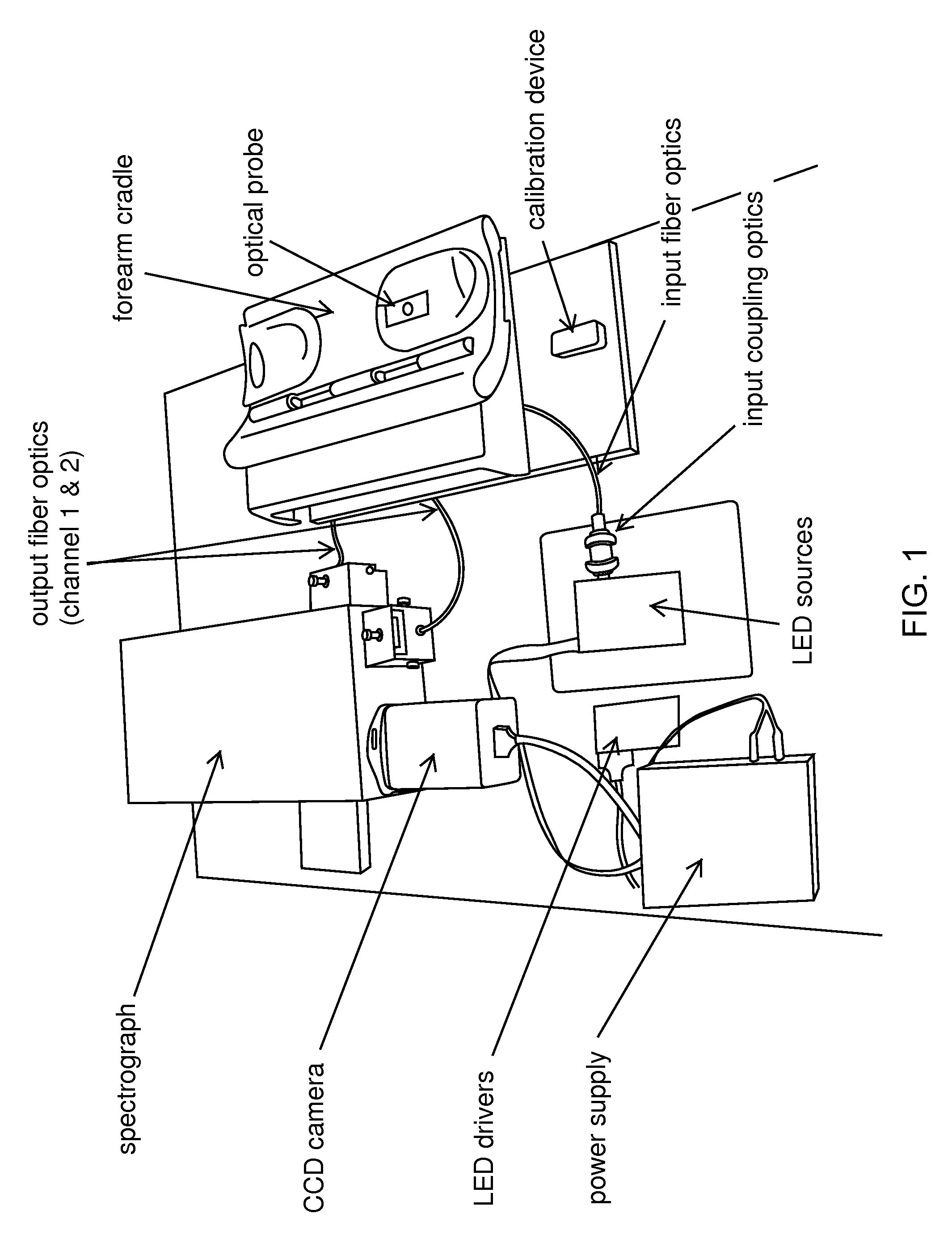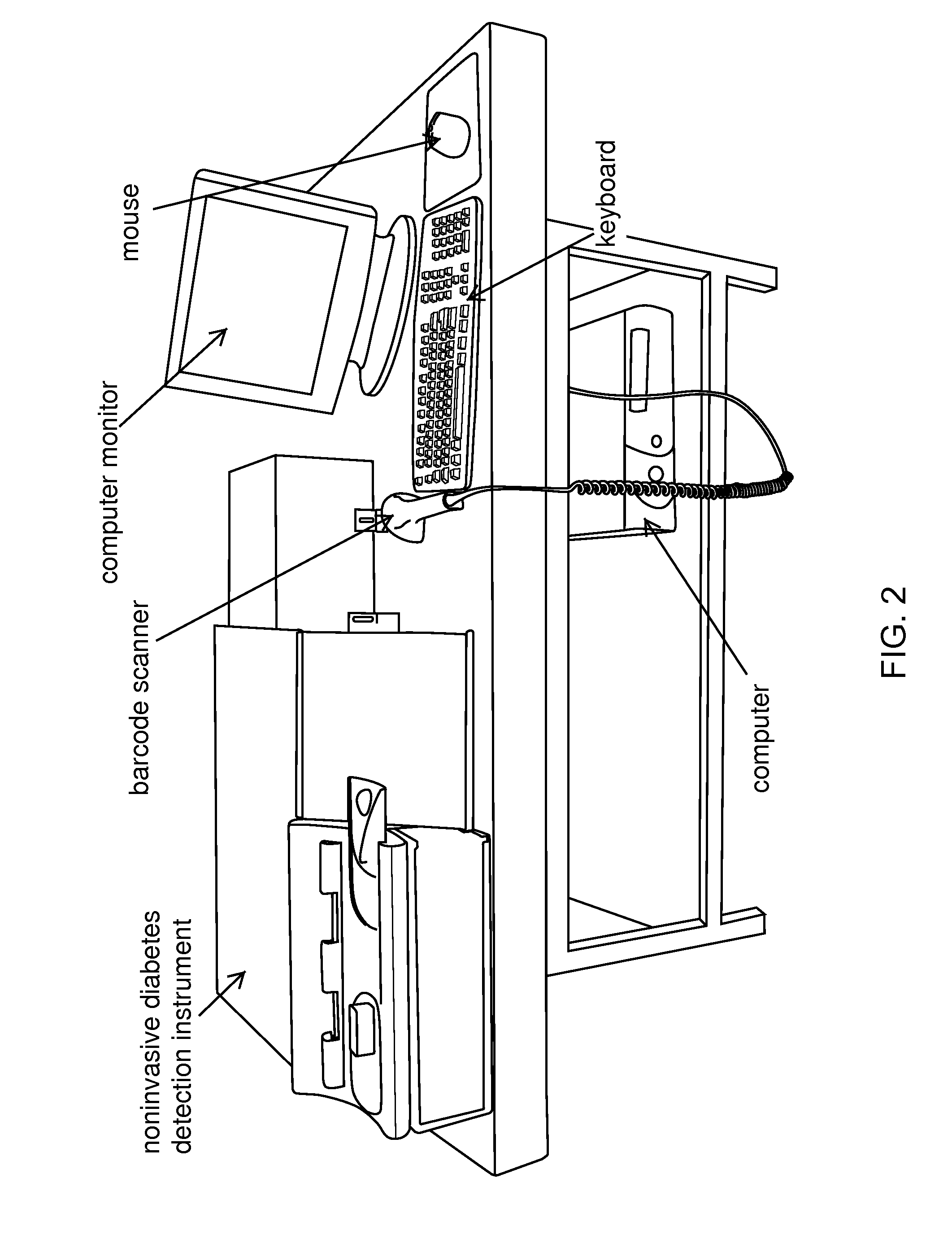Determination of a measure of a glycation end-product or disease state using tissue fluorescence of various sites
a tissue state and fluorescence technology, applied in the field of tissue state determination, can solve the problems of poor sensitivity of fpg, 40-60% of late diagnosis, inadequate screening methods for type 2 diabetes and pre-diabetes, etc., and achieve the effect of reducing measurement time, increasing the overall signal to noise ratio, and improving detection accuracy
- Summary
- Abstract
- Description
- Claims
- Application Information
AI Technical Summary
Benefits of technology
Problems solved by technology
Method used
Image
Examples
Embodiment Construction
Clinical Study Research Design and Methods
[0057]Embodiments of the present invention have been tested in a large clinical study, conducted to compare SAGE with the fasting plasma glucose (FPG) and glycosylated hemoglobin (A1c), using the 2-hour oral glucose tolerance test (OGTT) to determine truth (i.e., the “gold standard”). The threshold for impaired glucose tolerance (IGT)—a 2-hour OGTT value of 140 mg / dL or greater—delineated the screening threshold for “abnormal glucose tolerance.” A subject was classified as having abnormal glucose tolerance if they screen positive for either IGT (OGTT: 140-199 mg / dL) or type 2 diabetes (OGTT: ≧200 mg / dL). The abnormal glucose tolerance group encompasses all subjects needing follow-up and diagnostic confirmation. The study was conducted in a naïve population—subjects who have not been previously diagnosed with either type 1 or 2 diabetes.
[0058]In order to demonstrate superior sensitivity at 80% power with 95% confidence, an abnormality in 80 s...
PUM
 Login to View More
Login to View More Abstract
Description
Claims
Application Information
 Login to View More
Login to View More - R&D
- Intellectual Property
- Life Sciences
- Materials
- Tech Scout
- Unparalleled Data Quality
- Higher Quality Content
- 60% Fewer Hallucinations
Browse by: Latest US Patents, China's latest patents, Technical Efficacy Thesaurus, Application Domain, Technology Topic, Popular Technical Reports.
© 2025 PatSnap. All rights reserved.Legal|Privacy policy|Modern Slavery Act Transparency Statement|Sitemap|About US| Contact US: help@patsnap.com



